Mais de qui s’agit il? Quelle est cette marque d’enceintes? Qui est en arrière de tout ça?
Pour en apprendre plus sur l’homme et ses réalisations, Mr Gary Leonard Koh a accepté de répondre librement à quelques unes de nos questions, cet entretien a été réalisé en français pour les questions et en anglais pour les réponses.
Vous y découvrirez un humain profondément attaché à des bonnes valeurs, parfaitement conscient, intellectuellement vivant, un « trouveur » au delà d’être un chercheur, quelqu’un d’expérience qui voue son existence toute entière à une chose, concevoir des objets capables de reproduire la musique fidèlement.
Il me semble que ce n’est pas rien de vouloir aller au bout de ses idées, de repousser les limites et surtout de devoir se battre face à un ennemi plus puissant, représenté par un dictat qui ne vise que le profit et l’effet de manche, face à un mass market sous influence et tétanisé comme un lapin éblouie dans les phares d’une voiture lancée en pleine course.
Heureusement que nous avons encore des chefs d’entreprises dont l’ambition va bien au delà de ces petits considérations bassement mercantiles et qui croient encore que le marché existe pour des consommateurs de connaisseurs, avisés, affûtés serais je tenté de dire, des gens pour qui l’expérience sur le terrain est plus importante que tout le reste et qui font confiance aux professionnels concepteurs, plus qu’à une fiche technique indigeste et sans saveur pour le commun des mortels.
Il y a plus de 2000 ans, les Romains et les Grecs savaient construire des édifices performants pour reproduire la musique et les sons, ces monuments sont encore debout aujourd’hui devant nous, pourtant, même avec nos ordinateurs si puissants soient ils, personne n’est parvenu à faire mieux… malgré l’émergence massive des « mangeurs » de courbe de réponse en fréquence à tout prix ou les forumeurs enfiévrés, une chose est certaine, c’est bien l’expérience qui nous conduit à évoluer, le partage à évoluer, la connaissance à évoluer, se relever de nos erreurs qui nous sert à évoluer, grandir, s’ouvrir sur le monde et pour finir, laisser derrière nous une trace tangible de notre courte existence en servant d’initié, celui qui le premier a tracé la voie.
Ce qui m’épate de la part de Mister Koh, c’est ce charisme, cette générosité, cette attitude tranquille, digne et empathique envers son prochain, j’espère sincèrement que tout le bien qu’il prodigue lui sera rendu au centuple.
Vous allez apprendre comment installer vos enceintes acoustiques, ajuster l’image stéréo en 3D, vous seront révélés les secrets de se qui se cachent dans les enceintes acoustiques Genesis, ce qui fait leur force, leur singularité, les choix techniques à l’encontre des autres manufacturiers, les recommandations des meilleures musiques à écouter et plus encore.
Sans plus attendre, je vous invite à entrer dans le vif du sujet avec Monsieur Monsieur Gary Leonard Koh, Président Directeur Général de Genesis Advanced Technologies, celui que j’appelle l’initié et qui de part son insatiable appétit de savoir, vient de tracer la voie.
Gary, quelle est votre philosophie dans l’élaboration de vos enceintes et amplificateurs?
My philosophy of design is always « Music first ». It is most important that the products deliver music enjoyably and with an attitude and flow that makes it easy to spend hours and hours listening to music. This means that there should be no fatigue and strain when enjoying the music.
Much of this comes from an understanding of how and what we hear. I have articles in my newsletter that explain some of this – but essentially it is that the brain has to do a lot of processing of the soundwaves that come into the ear. The more the brain has to process to interpret the music, the more fatigue and strain there is, and hence there is no relaxation. You will give up listening very quickly.
So, comes the second point of my philosophy which is « First, do no wrong ». Do not try to fix the problems that you have created by using Zobel networks, negative feedback, etc. Attempt not to have problems in the first place, and then gently fix the errors.
Le modèle 5.3 est il votre modèle favori, si oui pourquoi?
No, the G5.3 is not my favorite speaker. My customers and dealers are always surprised when I tell them that my favorite speaker in the Genesis line is the G7.1p. There are two reasons. First, it was my first attempt at loudspeaker design. Secondly, the G7.1p is extremely capable for what it is – a small, very reasonably priced bookshelf speaker that can deliver all the Genesis qualities. There is nothing of the music that you will miss if you have this model in a small room.
Le positionnement des enceintes est primordial, quel est selon vous le set up de base?
I feel that positioning is paramount with all loudspeakers – not just the Genesis loudspeakers. Depending on the room, the positioning of the loudspeaker in that room can make or break a system far more than a change of interconnects, power amplifiers, or electronics. Positioning can make the system far more enjoyable and hence increase the value of the system.
However, the Genesis loudspeakers are designed to be less sensitive of set-up than most other loudspeakers for two reasons:
1) The suspension system makes it less dependent on the floor. The coupling/decoupling allows the speaker to be placed on wooden floors, suspended floors, concrete floors, carpeted floors, etc. and not sound completely different on different surfaces. It is not able to completely eliminate the material of the floor, but it ameliorates it a great deal better than simply spiking the speaker to the floor which increases the influence the « sound » of the floor has on the loudspeaker.
2) The dipole radiation pattern (from the mid-bass up in the G5.3, and from the tweeter in the 7-series) reduce the radiation of sound to the sidewalls, and hence reduce the influence of the sidewalls on the imaging and soundstage.
3) The bipole radiation pattern in the bass energizes the room volume better and produces far better bass uniformity in the room. This bipole radiation pattern also allows the speakers to be placed in more different locations in the room without energizing destructive room resonant modes.
Quel est l’avantage des haut-parleurs dipôles?
The advantage is that the speakers are easier to place in-room. See above. With dipole speakers, the out-of-phase information from the front and back drivers cancel sideways and upwards. The material and nature of the ceiling is also reduced.
Quel est l’avantage du grave actif?
With an active bass system, the main power amplifier needs to only drive from the mid-bass frequencies upwards. The great advantage of this is that the customer does not need a large, high-powered power amplifier to drive the speakers, and can choose an amplifier for its sonic elegance and musical ability instead of « heavy lifting ». An amplifier designed for heavy current delivery is often slow and not agile.
All the « heavy lifting » in the G5.3 is done with the built-in servo-controlled bass amplifier. This is servo-feedback controlled so that the bass has the speed and accuracy to match up with the midbass, midrange and tweeters. Due to the servo-control, there is no loss of coherence or speed between the bass and other drivers, despite the large size and weight of the woofer cones.
Another great advantage of the active bass is for « Green » reasons. The bass system of the G5.3 with the Class D module is extremely efficient and consumes far less electricity than a high-powered (or even a low-powered) Class AB amplifier. Hence, just like the GR360, it delivers far more for far less earthly resources than its competitors.
Nous avons pu constater que l’axe vertical était aussi important que l’axe horizontal, quel est l’influence de la verticalité de l’enceinte sur le son, avant/arrière et latéral gauche/droite?
In my demonstration, I showed the importance of the vertical axis to the development of the soundstage. The front/back height of the loudspeaker develops the height of the soundstage. The left/right height of the loudspeaker develops the horizontal plane – whether the stage is low in the middle (like a smile) or the stage is high in the middle (like a frown). Since there are four spikes, the front-right/left-back and back-right/front-left can also be used to twist the soundstage like a pretzel.
While this soundstage and image is very important to us audiophiles, it is not seen as important by the general public. I have unfortunately encountered many recordings where the soundstage is twisted in the recording because the recording engineer did not accurately position the microphone (or did not know that the microphone had to be accurately positioned).
So, personally, this is less important than the relationship between the two loudspeakers (which affects dynamics and rythm) and the relationship between the loudspeaker and the room.
Où se situe Genesis avec ce modèle 5.3 face à la concurrence?
The G5.3 competes with the top models of mid/high-end loudspeaker manufacturers, and of the high-end manufacturers, for the same price, we deliver far more musical enjoyment. As a rule, the active servo-bass system of the Genesis systems deliver better quality and more bass than the larger of its competitors.
Parlez nous des composantes internes des coffrets du 5.3?
All internal components of all Genesis loudspeakers are of our own design and manufacturer. The only « common » component is the Hypex Class D module that we employ (even here it is modified). However, in my design, I regard the Class D module as a single component, just like most designers would consider a vacuum tube, or an opamp.
The crossover design is proprietary Genesis. It does not use Linkwitz-Riley, Bessel, Chebychev, or any of the classical design equations because these are only one-dimensional – are perfect for a perfect resistor, and then have to be adapted to work with real-world drivers and impedance with additional filtering.
In my book of « First do no wrong », filter means to take something and throw it away. If you filter music, some music must be thrown away, so in my crossover filter network philosophy, I do as little as possible without creating big frequency and phase response abnormalities – so that the crossover can be as transparent to music as possible.
L’importance des matériaux : absorbants ou pas?
Again, back to my philosophy of do no wrong – any absorbent material is not smart enough to know that it is absorbing distortion and not absorbing music, hence it would absorb equally both. If the cone were damped to dissipate cone resonance (like many of the composite material cones that are very popular), how does the damping material know if it is cone resonance or if it is micro-dynamic and tonal detail in the music?
I use as little absorption as possible, and as little damping as possible to first do no wrong.
Pourquoi avoir choisi des drivers en aluminium?
Pure metal (aluminum, titanium, iron, tin, etc) are horrible and wonderful materials. Any piece of metal has a resonant frequency – look at the frequency spectrum for example of a tin can, and oil drum, or even a sheet of metal. However, this resonant frequency is very well understood and well defined. If the resonant frequency is not excited, the metal has no other resonances – unlike paper/plastic/composite, etc.
Instead to trying to damp and absorb away all the resonance, allow for the resonance, but never to excite it. For example, the 8-inch woofers have a resonant frequency of 1,200Hz – which it will never encounter. The aluminum mid-bass coupler has a resonant frequency of 2,800Hz – which it will also never encounter.
We bring this example even to the baskets of the drivers. With the woofers, the cast aluminum basket has a high resonance frequency that is not excited. With the midrange driver, a cast aluminum basket is not used as it has too high a resonant frequency. We use a « cheap » pressed metal basket as it has a resonant frequency that is below the frequencies employed in the midrange – quite in opposite to other manufacturers and designers.
Que dites vous à ceux qui prétendent que les drivers en aluminium sonnent « métallique »?
Metal drivers will sound metallic when the resonant frequency is excited. By operating within the range where these resonances will not be excited, the drivers work as a perfect driver. All you will need to do is to play pieces of music without any metal instruments to know that the G5.3 does not sound metallic.
Any of our aluminum drivers, if operated without our crossovers, will sound like aluminum cans.
Comment est née l’amplificateur de référence GR360?
The GR360 was born out of sheer necessity. As a loudspeaker designer and manufacture, I have to use power amplifiers during my design. Without the proper transparency and quality, the loudspeaker is limited by the delivery of music. My previous reference was excellent, but extremely expensive, and it is difficult to recommend such an amplifier (which is also not common or easily available) to my customers and my dealers.
Moreover, the design and development process is very dangerous to the amplifier. I am constantly removing and adding elements to the crossover during the time that the music is playing!! This is the best way to be sure that switching the amplifier on and off has not changed the sound. The result is that I short out and blow up the fuse of the amplifier many times during a design session. The risk to the very expensive amplifier is substantial.
The GR360 was originally designed only to be used inside my music development lab. It is short-circuit proof, and sufficiently transparent for design duty during development of the $79,000 G2.2 and the $235,000 G1.2.
However, during one exhibition, we did not have an amplifier to use, and I brought my prototype to demo with. It was received so well that I decided to put it into production.
C’est très rare de la part d’un manager d’entreprise de s’intéresser autant à ses produits, où avez vous appris ces techniques d’optimisation, de mise en œuvre des système hifi et cinéma maison?
Discovery consists of seeing what everybody has seen and thinking what nobody has thought – Albert Szent-Gyorgi
Part of the basic discovery came from a study of how and what we hear, then thinking of what is needed to reproduce the musical experience. Next, I looked at the basic problem of translating an electrical waveform into sound waveform. Then, I looked at how to break up that full-range sound waveform into the parts that can be reproduced by available drivers.
Où se situe Genesis au Canada?
Bruno de Lorimier is the Genesis representative in Canada, and can answer this one better. I feel that Canada is an important market for Genesis, however, I have not developed the market because of the lack of a suitable partner. I think that Bruno’s passion for music, knowledge, experience and energy matches my own, and hence over the past few months have been working hard together to develop the market.
Où se situe Genesis dans le reste du monde?
With the world economic situation, the palate is chaotic and changing everyday. We have just developed the South American market with a new distributor in Brazil and Chile. Our Eastern European market is growing with distributors in Poland and Ukraine. The traditional market of the USA and Western Europe is still one of our largest markets, but at this time may need to take a sabbatical.
I believe that the world is changing just as we are living it. It is not possible to be doing the same thing as we did yesterday and expect a different result tomorrow. It is also not possible to do a different thing tomorrow and expect the same result we got yesterday.
We are living in exciting times!!
Quelle est votre rêve ?
ou quels sont vos rêves, s’il en a plusieurs?
I have a very simple dream : to bring the pure enjoyment of music (and also movies to a much lesser extent) to people.
Unfortunately, in the recent years, the developed world as a whole has been far too busy and stressed to enjoy music.
With iPod, mp3, etc. music is everywhere, but people only listen to music as a distraction – while they are doing something else – cooking, reading, exercising. This is « white noise », and too much of the music has been dumbed-down until it is no more than elevator music.
What’s your point of view about acoustic treatment on a listening room?
Quel est votre point de vue en ce qui concerne le traitement acoustique d’une pièce dédiée à la hifi?
For me, there are two parts to this question. Firstly, I think that the room is the biggest influence on the sound of the system – as much as the loudspeaker or the source even. Secondly, due to evolutionary psychology, our brains have come to expect a sound when we enter a location. For example, when we enter a cave, we expect to hear echos and resonances, and when we are in an open space, we do not expect to hear echos and resonances. If the sound of the environment is totally not what we expect, we can feel dizzy and suffer from vertigo.
Hence, when we enter a listening room, our experience and evolution conditions us to expect a certain sound of the room. When we do not hear that sound, we feel uneasy and it is very fatiguing.
So, acoustic treatment had to be done with a gentle, elegant hand.
On a same room, with or without acoustic treatment, what’s happened with the 5.3?
Dans une même pièce avec ou sans traitement acoustique, comment vont se comporter les 5.3?
As long as the room is not over-treated, the G5.3 will behave well. The bipôle bass and dipôle upper frequencies already makes it easy for the G5.3 to be placed in most rooms. However, since the bass is so extended and strong, it can excite rooms with significant bass modes. Hence, some bass treatment is ready.
I am not a big fan of bass trapping. Like a wild animal, it is difficult to trap and constrain bass. There is a lot of energy involved, and most bass trapping solutions merely make the problem worse with a form of trap and release because the bass energy that is captured is not completely eliminated.
The G5.3 likes a « live » front wall (in front of listener and behind the loudspeaker), a damped or absorbing back wall (behind the head of the listener), and diffusion on the side walls. This treatment develops the best room where the room dissolves and the listener is transported into the occasion of the music recording (assuming a properly recorded event of course).
Try Misa Criolla with Jose Carreras. This is one of the best recorded LP’s that I have ever heard. The CD by FIM is also excellent. With good treatment and placement, the room disappears, and you can hear the corners of the hall in which the performance is being done.
What’s your background?
Quelle est votre formation à la base de votre expérience?
I have 4 sisters who all sing and play the piano. When we were children, after dinner we would gather around the piano with my parents, and we would all sing and play. SK Lee – the founder of the SK Lee College at the Vancouver Academy of Music was my uncle, and when he was still living in Singapore, we would have private recitals in his living room. At his home, I have listened to many of the now-famous musicians live, unamplified and close up.
So, my love for music comes from a very young age. Throughout my working life, I have used music to « wash away dust of everyday living ». I would come home to music so that I can de-stress and re-energize.
If you must leave with only 10 CD of music, what tittles will you choose?
Si vous ne deviez emporter que 10 disques avec vous, quels seraient ils?
Dave Brubeck – Take Five
Joe Cocker – Sheffield Steel
Jose Carreras – Misa Criolla
The Beatles – Abbey Road
George Faber – Blues
Cardon, Bestor – Innovators
Oscar Peterson Trio – We Get Requests
Getz and Gilberto – Live at Carnegie Hall
Dire Straits – Love over Gold
Ax, Stoltzman, Ma – Trios for Piano, Clarinet & Cello.
It would be possible to know the 5 movies on your favorite list?
Movies would be a lot more difficult – I generally don’t watch a movie more than once.
Quel message souhaitez vous faire passer à nos lecteurs?
Listen to the music, not the equipment. The hifi system should be in the service of music, and not the other way around. Without music, our lives would be very dull and grey.
« Ecoutez de la musique, pas les appareils. Un système hifi se doit d’être au service de la musique et non le contraire. Sans musique, notre Vie serait morne et grise.
Cheers, Salutations
Gary Leonard Koh.
Conclusion
Ecouter de la musique c’est ce que nous avons fait, en piochant goulument dans le catalogue de chez First Impression Music, ou encore en jetant notre dévolu sur The Age of Swing par Dick Hyman ainsi que George Faber – BLUES.
Un festival de sons tous aussi pétillants les uns que les autres, une note sucrée, tel un excellent dessert qui appelle un bon café et un cigare, ce sont ces saveurs à la fois sucrées, salées, douces et corsées que nous retiendrons de cette rencontre.
Je constate, non sans surprise, que je partage au moins 3 disques de référence avec Gary, puisque je suis d’une part un grand fan des éditions First Impression Music dans son ensemble, avec pour commencer la version FIM K2 de Oscar Peterson Trio – We Get Requests, sur support silver, en particulier la première plage, « You look good to me » qui fait partie intégrante de notre disque test depuis plusieurs années; Dave Brubeck – Take Five, notamment la plage 7 et le solo d’enfer de près de 11 minutes de Joe Morello sur la version de 1963 au Carnegie Hall; Dire Straits – Love over Gold, bien entendu, un grand classique indémodable.
Ouf, que ça fait du bien de partager avec d’autres nos coup de cœur musicaux, c’est stimulant.
Nous partageons également les mêmes vues sur l’acoustique et l’usage des correcteurs du genre bass trapp, qui ne sont que des emplâtres sur une jambe de bois.
Avoir une vision simple et non simplifiée de l’acoustique et des éléments dans leur contexte, procure plus de satisfaction en bout de ligne que l’élaboration complexe d’un système mal balancé et des enceintes mal positionnées, comme c’est généralement le cas.
Pour terminer, j’ai un message personnel à l’attention de Gary, puisque comme moi vous semblez apprécier « La Misa Criolla », je vous recommande chaudement la version avec Ariel Ramirez, sous la direction de José Louis Ocejo, Editions Pigal Ediciones Musicales (P) 1988 Polygram Classics (Philips), c’est une petite merveille à découvrir d’urgence.
Je vous invite à prendre connaissance de la troisième partie consacrée aux enceintes Genesis 5.3 et l’amplificateur GR360.
Contact et information complémentaire
Genesis Advanced Technologies
Monsieur Gary Leonard Koh, Président Directeur Général.
654 South Lucile Street
Seattle, WA 98108
USA
Tel: (206) 762-8383
Fax: (206) 762-8389.
Remember, the value of quality is remembered long after the price is forgotten.
Souvenez vous d’une chose, ce qui fait la performance et la valeur réelle d’un produit, c’est ce qui reste une fois que vous vous êtes affranchi du prix. cqfd
Cette phrase issue de la page web du manufacturier, résume tout ou presque.
Cet article a été rédigé par Marc PHILIP, rédacteur indépendant, tous droits réservés, copyright 2010, les textes et photos sont la propriété de l’auteur et du magazine.
Bonne journée et bonnes écoutes.


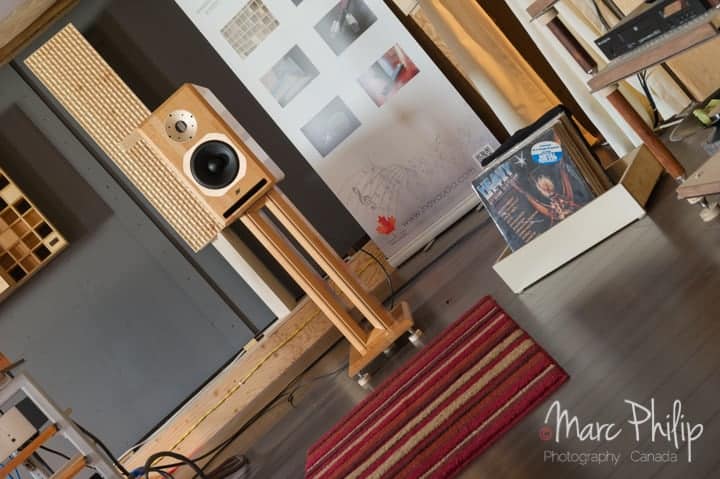


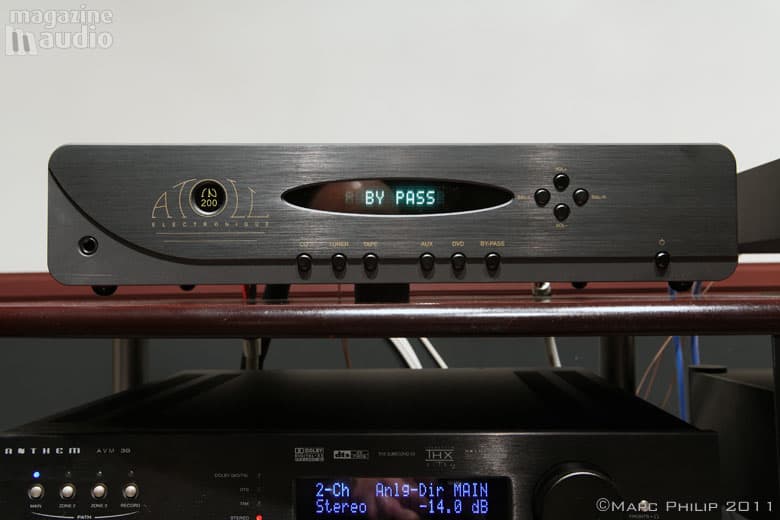



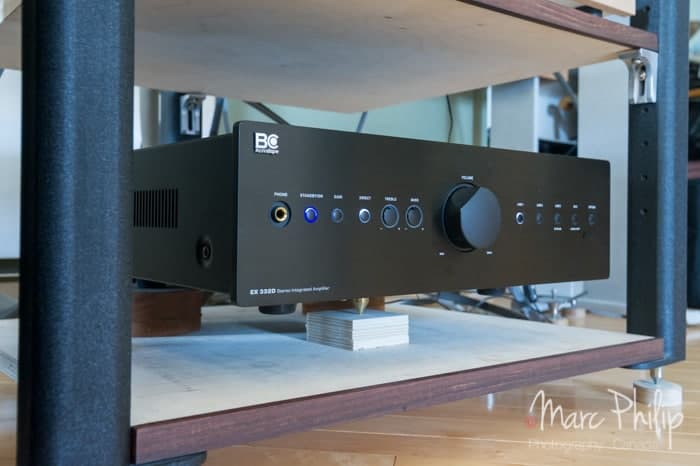
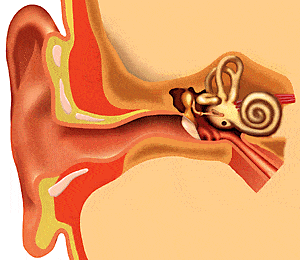



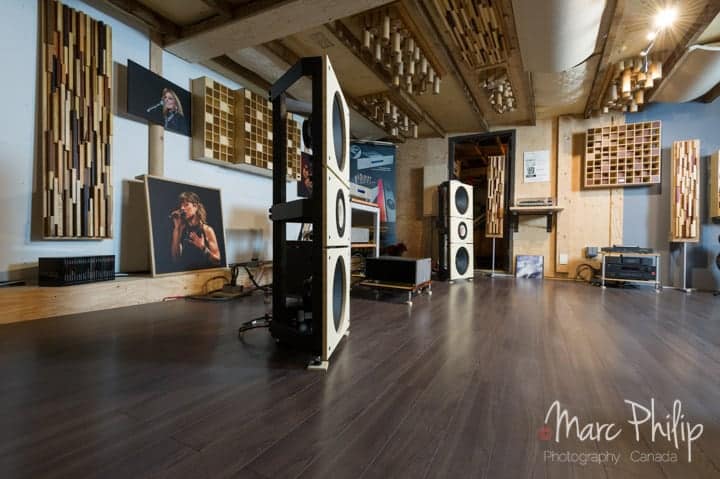
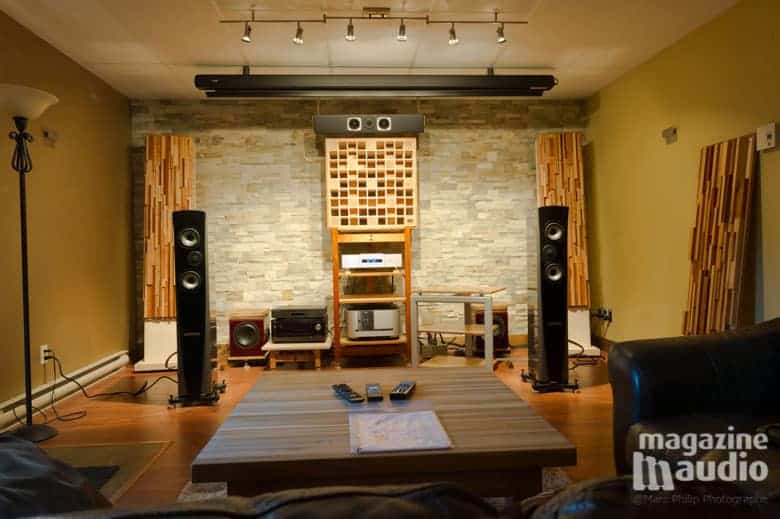
Les commentaires sont fermés.